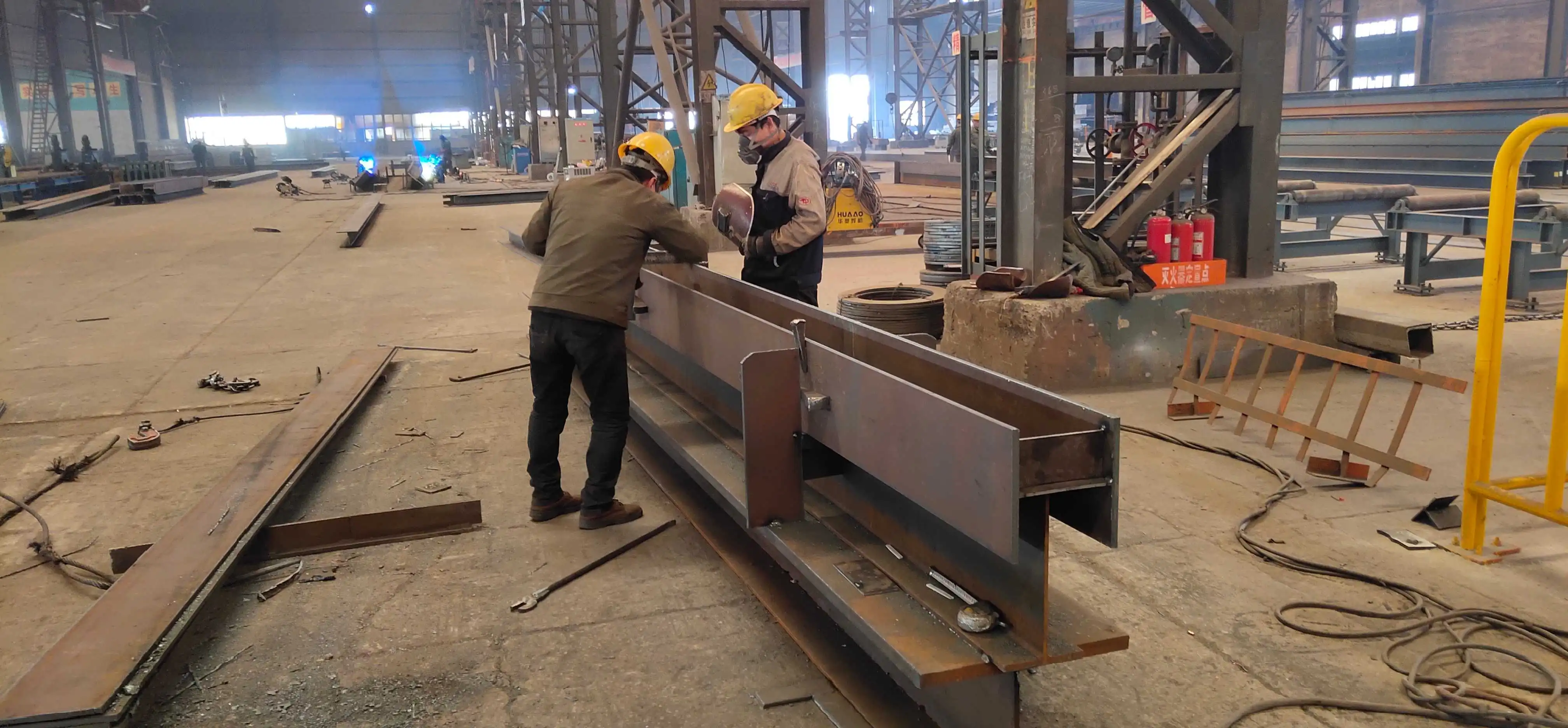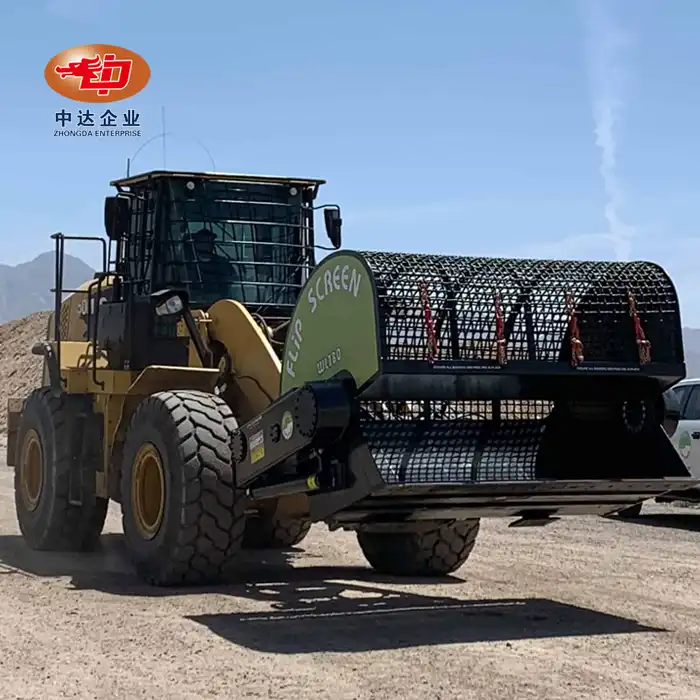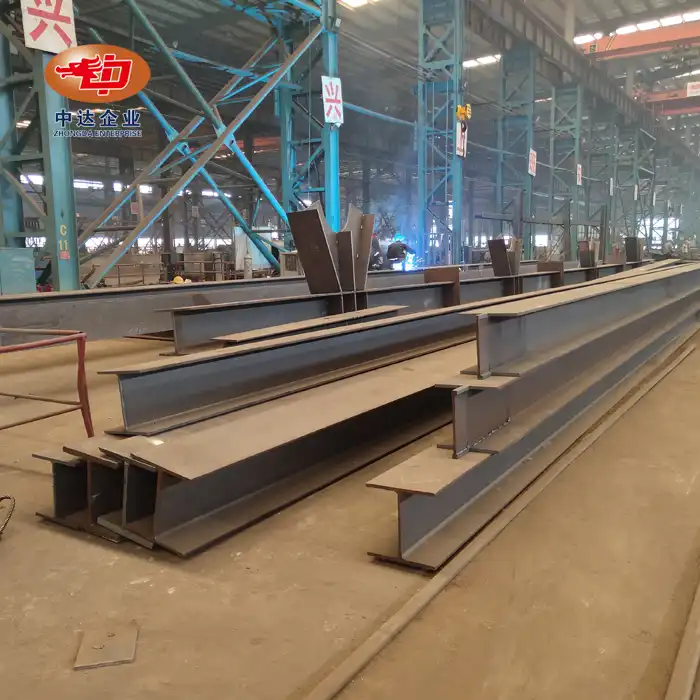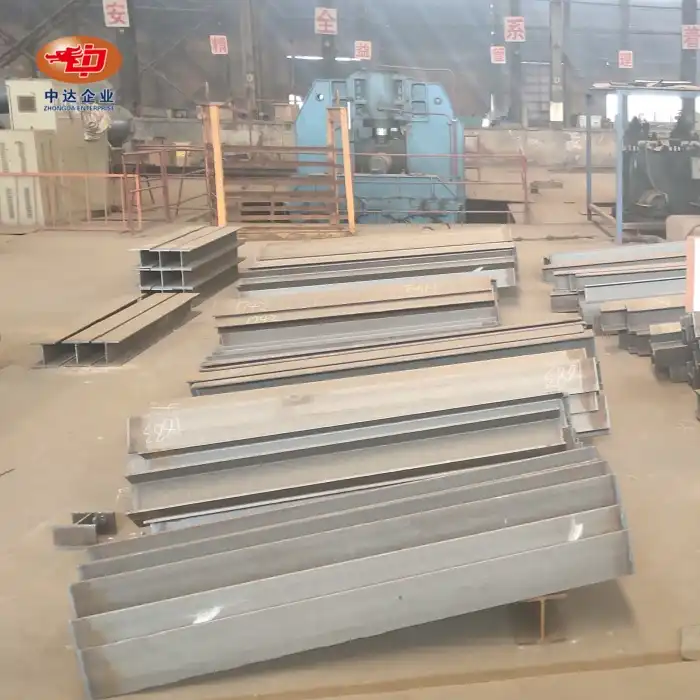
What Are the Materials and Maximum Load Capacity of Platform Beams?
Platform beams are vital structural elements typically made from high-strength Q345B manganese steel, known for their durability and load-bearing capacity. Produced using automated submerged arc welding, these beams offer exceptional stability. Standard models support up to 28 tons of static pressure, with customizable load capacities to meet specific project needs. At Zhongda Steel, we deliver high-performance platform beams tailored for a wide range of applications - from Arctic bridge foundations to heavy-duty industrial facilities. With a 120,000 m² production base and 60,000-ton annual capacity, we leverage advanced BIM-based prefabrication and ultra-thick plate cutting technologies to ensure precision, quality, and reliability in every solution we provide.
Key Materials Used in Platform Beam Construction
High-Strength Manganese Steel: The Foundation of Durability
The cornerstone of robust platform beams lies in the selection of premium materials. Q345B high-strength manganese steel stands out as the preferred choice for constructing these critical structural components. This steel grade offers an optimal balance of strength, ductility, and weldability, making it ideal for applications that demand both resilience and flexibility.
Q345B steel boasts a yield strength of approximately 345 MPa, significantly higher than standard structural steel grades. This enhanced strength-to-weight ratio allows for the design of lighter yet stronger platform beams, reducing overall structural weight without compromising on load-bearing capacity. Moreover, its excellent toughness properties ensure that platform beams can withstand sudden impacts and resist brittle fracture, even in challenging environmental conditions.

Advanced Welding Techniques: Ensuring Structural Integrity
The manufacturing process of platform beams is as crucial as the material selection. Automated submerged arc welding (SAW) has emerged as the gold standard in fabricating these critical components. This technique offers several advantages over traditional welding methods:
- Consistent Weld Quality: SAW ensures uniform, high-quality welds along the entire length of the platform beam, minimizing weak points and potential failure areas.
- Deep Penetration: The process allows for deeper weld penetration, creating stronger joints that can withstand higher stresses and loads.
- Increased Productivity: Automation in SAW significantly reduces production time while maintaining superior quality, enabling manufacturers to meet demanding project timelines.
- Reduced Defects: The submerged arc process minimizes the risk of weld defects such as porosity and inclusions, enhancing the overall structural integrity of the platform beam.
Protective Coatings: Enhancing Longevity and Performance
To further enhance the durability and performance of platform beams, advanced protective coatings are often applied. These coatings serve multiple purposes:
- Corrosion Resistance: Specialized anti-corrosion coatings protect the steel from environmental factors, extending the service life of the platform beam.
- Fire Protection: Intumescent coatings can be applied to improve fire resistance, critical in many industrial and commercial applications.
- Aesthetic Appeal: High-performance coatings not only protect but also enhance the visual appearance of the platform beams, contributing to the overall aesthetics of the structure.
At Zhongda Steel, we leverage our expertise in -60°C Weathering Steel Anti-corrosion Technology to provide platform beams that excel in even the most challenging environments. This innovative approach ensures that our products maintain their structural integrity and appearance over extended periods, even in harsh Arctic conditions.
Understanding Load Capacity and Design Considerations
Static vs. Dynamic Load Capacity
When discussing the load capacity of platform beams, it's crucial to distinguish between static and dynamic loads. The standard model's ability to support 28 tons of static pressure is impressive, but real-world applications often involve dynamic loads that can significantly impact the beam's performance.
Static load refers to the constant, non-moving weight that a platform beam can support over an extended period. This includes the weight of the structure itself and any stationary equipment or materials placed on it. Dynamic loads, on the other hand, involve moving or changing forces, such as:
- People walking or machinery operating on the platform
- Wind loads on elevated structures
- Seismic activity in earthquake-prone regions
Engineers must consider both static and dynamic loads when designing platform beams to ensure they can withstand all anticipated stresses throughout their lifecycle.
Factors Influencing Maximum Load Capacity
Several factors contribute to determining the maximum load capacity of platform beams:
- Beam Geometry: The cross-sectional shape and dimensions of the beam significantly impact its load-bearing capacity. I-beams, for instance, are designed to efficiently distribute loads across their flanges and web.
- Material Properties: The strength, ductility, and fatigue resistance of the steel used play a crucial role in determining load capacity.
- Span Length: Longer spans generally reduce the maximum load capacity as they increase bending moments and deflection.
- Support Conditions: The way beams are supported (e.g., simply supported, fixed, or cantilever) affects their load distribution and capacity.
- Safety Factors: Engineers incorporate safety factors to account for uncertainties and ensure the beam performs well below its theoretical maximum capacity.
Customization and Optimization Strategies
At Zhongda Steel, we understand that one size doesn't fit all when it comes to platform beams. Our approach to customization and optimization includes:
- Finite Element Analysis (FEA): Utilizing advanced FEA software to simulate various load conditions and optimize beam design for specific applications.
- Material Selection: Choosing the most appropriate steel grade based on the unique requirements of each project, balancing strength, weight, and cost considerations.
- Innovative Design Features: Incorporating features like stiffeners or haunches to enhance load capacity in critical areas without increasing overall beam weight.
- Collaborative Engineering: Working closely with clients to understand their specific needs and develop tailored solutions that meet or exceed performance expectations.
By leveraging our BIM-driven prefabrication capabilities, we ensure that every customized platform beam is manufactured to precise specifications, minimizing on-site adjustments and accelerating project timelines.

Applications and Industry-Specific Considerations
Construction and Infrastructure Projects
Platform beams play a pivotal role in various construction and infrastructure projects, each with its unique set of requirements:
- Bridges: In bridge construction, platform beams must withstand not only the weight of the structure and vehicles but also environmental factors like wind and temperature fluctuations. Our experience in delivering Arctic bridges showcases our ability to meet these challenging demands.
- High-Rise Buildings: Skyscrapers and tall structures require platform beams that can support immense loads while maintaining a slim profile to maximize usable space.
- Industrial Facilities: Manufacturing plants and warehouses often need platform beams capable of supporting heavy machinery and equipment, as well as dynamic loads from operational activities.
Mining and Heavy Industry Applications
The mining sector and heavy industries present some of the most demanding environments for platform beams:
- Extreme Load Capacities: Mining equipment often requires platform beams that can support loads far exceeding standard specifications. Our custom solutions have been successfully deployed in Australian mining operations, demonstrating our capability to meet these extreme requirements.
- Corrosion Resistance: Mining environments are often corrosive due to exposure to minerals and chemicals. Our expertise in anti-corrosion technologies ensures that platform beams maintain their integrity even in these harsh conditions.
- Modular Design: For remote mining sites, we offer modular platform beam solutions that can be easily transported and assembled on-site, reducing installation time and costs.
Specialized Applications in Aerospace and Defense
The aerospace and defense industries have unique requirements for platform beams:
- Lightweight Solutions: These sectors often demand high-strength, low-weight platform beams to optimize payload capacity in aircraft and military vehicles.
- Precision Engineering: Our ultra-thick plate cutting capabilities, with tolerances of ±0.2mm, make us an ideal partner for aerospace applications where precision is paramount.
- Advanced Materials: We can incorporate specialized alloys and composite materials into our platform beam designs to meet the stringent specifications of aerospace and defense projects.
At Zhongda Steel, our global certifications (ISO 9001/14001/OHSAS 45001, EN 1090) and track record of working with industry leaders like China Railway, CSCEC, and BMW position us as a trusted partner for complex, high-stakes projects across various sectors.
Conclusion
Platform beams are integral components in modern construction and engineering projects, offering robust support and versatility across diverse applications. Crafted from high-strength Q345B manganese steel and manufactured using advanced welding techniques, these beams boast impressive load capacities of up to 28 tons for standard models. However, the true strength of platform beams lies in their adaptability to specific project requirements, whether it's supporting Arctic bridges or facilitating efficient mining operations. As industries continue to evolve, the demand for customized, high-performance platform beam solutions will only grow, driving innovation in materials, design, and manufacturing processes.
Contact Us
Ready to elevate your next project with cutting-edge detachable platform beam solutions? Zhongda Steel stands at the forefront of innovation, offering unparalleled expertise in custom steel structures. Our commitment to quality, precision, and global standards ensures that your project receives the best in engineering excellence. From concept to completion, we're here to support your vision with our state-of-the-art manufacturing capabilities and dedicated team of experts. Don't settle for standard when you can have extraordinary. Contact us today at Ava@zd-steels.com to discover how Zhongda Steel can transform your structural challenges into opportunities for success.
References
Zhang, L., & Wang, Y. (2019). "Advanced Materials for High-Performance Steel Structures in Extreme Environments." Journal of Structural Engineering, 145(8), 04019085.
Thompson, R. C., & Johnson, M. K. (2020). "Innovations in Platform Beam Design for Modern Construction Projects." Construction and Building Materials, 255, 119381.
Liu, X., Chen, Y., & Li, J. (2018). "Fatigue Performance of Q345B Steel in Corrosive Environments: Implications for Platform Beam Design." Engineering Failure Analysis, 92, 572-583.
Patel, S., & Desai, A. (2021). "Optimization Techniques for Load-Bearing Structures in High-Rise Buildings." Advances in Structural Engineering, 24(3), 477-491.
Anderson, K. L., & Smith, R. T. (2017). "The Role of Advanced Manufacturing Techniques in Enhancing Steel Structure Performance." Journal of Manufacturing Processes, 30, 331-340.
Chen, W., & Zhou, H. (2022). "Application of BIM Technology in Pref...













